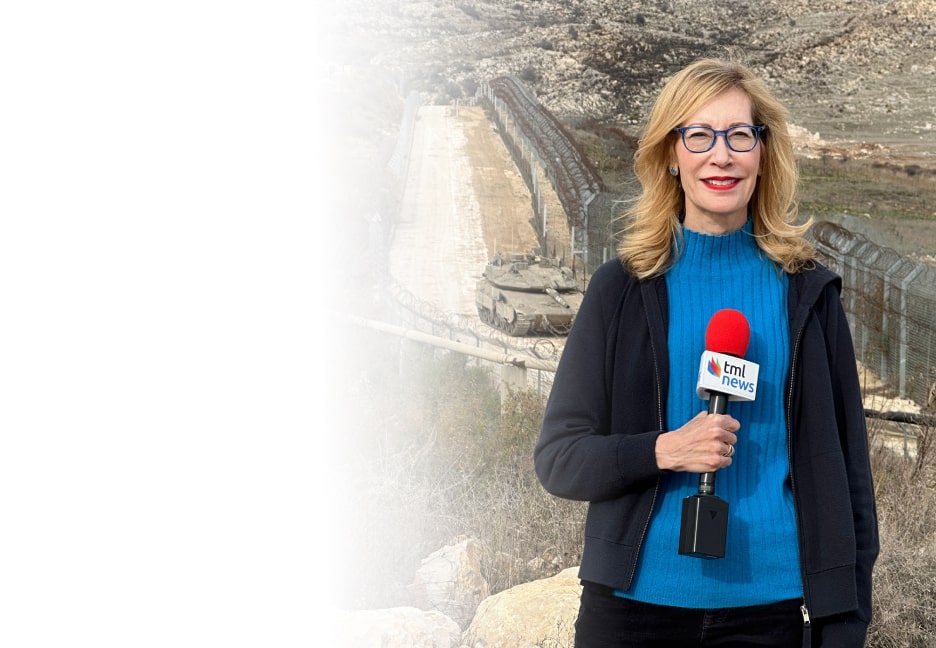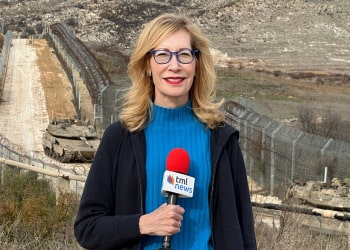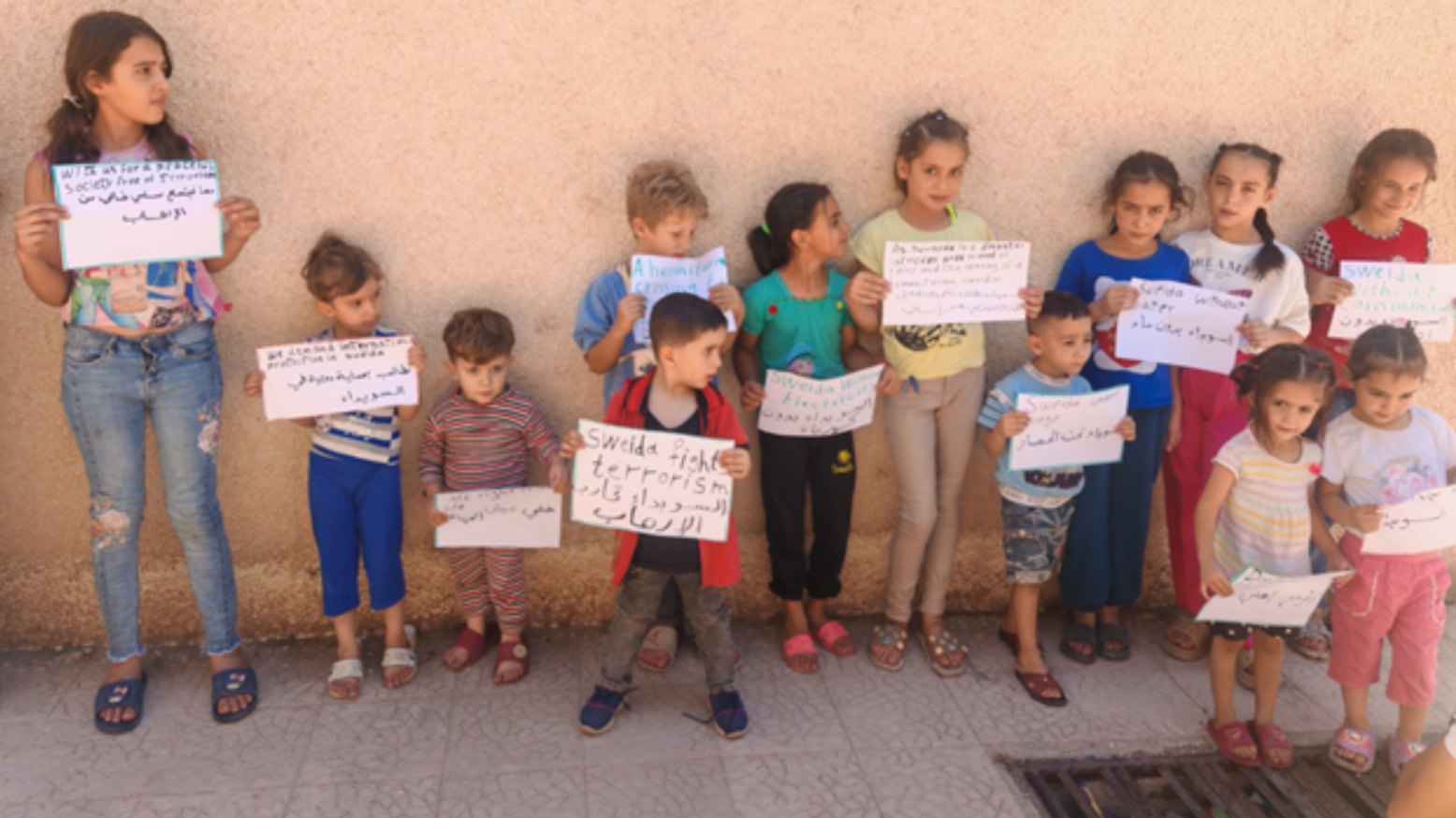‘We Are Ready To Put Down Our Weapons When Our People Are Safe,’ Says Syrian Tribal Leader
With over 500 dead, Syria’s south fractures along tribal lines amid claims of betrayal and inaction
[Daraa and Istanbul] Southern Syria is splintering further as Bedouin tribal factions mobilize in response to what they claim are attacks and mass displacements by Druze militias in As-Suwayda province. A renewed round of violence has already displaced more than 130,000 people and caused over 500 deaths.
Tribal leaders maintain their campaign is not aimed at the Druze community but is a reaction to what they describe as targeted killings and betrayal by factions aligned with Druze cleric Sheikh Hikmat al-Hijri. In an interview with The Media Line, Sheikh Adnan Braikan al-Atiqi, a tribal elder from the Lajat region, called the fighting both a humanitarian mission and a political plea for state intervention. He accused Hijri-aligned militias of forcibly displacing Bedouin civilians and committing mass killings.
The Druze are our compatriots. We came to rescue our own — the children and women of Bedouin families trapped and displaced
“This follows Israeli strikes targeting Syria’s Ministry of Defense and army units, and the betrayal by Hijri factions, who even turned on General Security and the army when they tried to mediate,” Al-Atiqi said. He emphasized that the tribes are not confronting the broader Druze population. “The Druze are our compatriots. We came to rescue our own — the children and women of Bedouin families trapped and displaced.”
We remain under the umbrella of the state but demand justice
Al-Atiqi said most civilian casualties have been women and children. He accused Hijri’s fighters of using artillery in populated areas and criticized the Syrian government for failing to intervene. “We remain under the umbrella of the state but demand justice — starting with those responsible: Hikmat al-Hijri, Colonel Tariq al-Shoufi and others.”
Al-Atiqi also claimed that Israel is supplying weapons to Druze militias via helicopter drops, an allegation unsupported by evidence. Local activists, Syrian officials, and residents monitoring airspace report no indication of such operations. The only verified instance of Israeli helicopter activity in the area occurred in April, when the IDF evacuated wounded individuals believed to be prominent southern Damascus Druze.
The July 28 formation of a new tribal “operations room” signals a return to wartime coordination models from earlier in the conflict. These command hubs became fixtures of opposition efforts during campaigns against the Assad regime. The latest version, involving about 5,000 fighters, has not yet launched attacks but is preparing a public statement.
Operations rooms were first used in 2014 by Islamist factions like Ahrar al-Sham and Jabhat al-Nusra. Jabhat al-Nusra’s leader, Ahmed al-Sharaa (Abu Mohammad al-Jolani), later rebranded the group as Hayat Tahrir al-Sham (HTS), consolidating control in Idlib with tacit Turkish support.
Between 2020 and 2023, HTS expanded its influence through military pressure, localized ceasefires and outreach to Arab tribes in the south.
Jolani is still Jolani. He remains a dangerous figure with terrorist origins
Retired Brig. Gen. Meir Elran, an Israeli analyst and a former deputy Director of the IDF Military Intelligence, cautions against exaggerating Jolani’s reformist image. “Jolani is still Jolani,” Elran told The Media Line. “He remains a dangerous figure with terrorist origins — his rebranding does not change our assessment. We monitor him as we do all non-state actors near our borders.”
Our struggle for justice never ended; it only paused
Southern tribal leaders now adopt the operations room model to coordinate self-defense and territorial control through local alliances without pushing any ideological agenda. Yet for many Sunni communities, this revival reflects unresolved grievances. One elder said, “Our struggle for justice never ended; it only paused.”
Damascus appears focused on containment rather than escalation. It did not retaliate after Israeli strikes hit the General Staff building, a breach that went unanswered. Quiet efforts continue to prevent Hezbollah or Iranian militia resurgence in the Golan-adjacent southwest, reportedly under informal understandings to minimize threats to Israel and tighten regime control.
To enforce the As-Suwayda ceasefire, Syrian authorities have confiscated weapons from tribal forces and reassigned security personnel in Daraa. Checkpoints have been reinforced in sensitive areas like Khalidiya and Salmiya, and officers suspected of tribal sympathies have been replaced. The moves aim to disrupt connections between state forces and tribal militias.
Jordan, sharing a southern border with Syria, is closely monitoring the situation. Concerns over drug trafficking, armed group infiltration, and instability persist. Jordan’s Foreign Ministry welcomed the July 19 ceasefire and called for restraint. Spokesperson Sufian Qudah reiterated support for Syrian unity and civilian protection. Jordanian media have since warned of possible refugee influxes.
This holiday season, give to:
Truth and understanding
The Media Line's intrepid correspondents are in Israel, Gaza, Lebanon, Syria and Pakistan providing first-person reporting.
They all said they cover it.
We see it.
We report with just one agenda: the truth.


Foreign Minister Ayman Safadi, a member of Jordan’s Druze minority, has long advocated for inclusive governance and regional stability. Meanwhile, tribal leaders in Jordan’s southern governorates — many with kinship ties to Syrian Bedouins — have voiced frustration over attacks on their relatives. They frame the tribal mobilization as a defense effort, not a sectarian offensive.
Amid the fragile ceasefire, Syrian authorities facilitated the evacuation of Druze residents from As-Suwayda. On July 30, five buses transported civilians to Daraa via the Busra al-Sham humanitarian corridor. “Some evacuees had jobs or family in Damascus and got trapped in As-Suwayda during the violence,” said Daraa resident Ayham Al-Hosain. Others returned to As-Suwayda from Damascus under Red Crescent protection.
The Syrian Network for Human Rights reported 426 deaths in the clashes preceding the July 19 truce — the fourth cease-fire attempt that month. In neighboring Quneitra province, activists report tribal fighters entering areas previously held by Druze factions, raising fears of renewed clashes near the Golan Heights.
In Daraa, tribal factions are pressuring Damascus to curb rogue Druze militias and facilitate the return of displaced families. “There is a shift toward portraying the fighting as sectarian, which threatens the country’s unity,” said Aziz Musa, a Damascus-based researcher.
The UK-based Syrian Observatory for Human Rights reports more than 510 deaths since the latest violence began, including civilians, Druze fighters and tribal combatants. AS-Suwayda’s main hospital has received over 400 bodies, according to medical sources.
Aid groups warn of severe shortages in food, fuel and medicine. On July 28, the Red Cross and Syrian Red Crescent delivered emergency aid, but officials say it is not enough. Displaced families are sheltering in schools, fields and makeshift camps across rural Daraa, with relief workers expecting numbers to rise if hostilities resume.
Among the dead is Hosam Saraya, a 35-year-old Syrian American from Oklahoma, executed alongside seven relatives on July 19. Human rights monitors verified footage showing them being rounded up and shot at close range. The executions have sparked outrage in diaspora communities and underscore the escalation of violence against civilians.
Even though there’s a ceasefire now, that feeling of being uprooted hasn’t gone away. It’s like we’re internally displaced in our own land.
Laila Kiwan, 24, a local journalist in the village of Sawhat al-Khudr in As-Suwayda, described the psychological toll on residents. “Even though there’s a ceasefire now, that feeling of being uprooted hasn’t gone away. It’s like we’re internally displaced in our own land,” she said. “The fear doesn’t leave you.”
“I keep hearing stories — killings, children and women caught in the violence — and it just builds this anxiety inside me,” she continued. “I’m constantly worried another battle will break out. And if it does, it’s always the most vulnerable who pay the price.”
Everything that makes life livable is either gone or hanging by a thread
“We’ve already lost so much — healthcare, fuel, electricity, even the internet. Just getting through a normal day feels like a struggle. Everything that makes life livable is either gone or hanging by a thread.”
Sunni Islamist media outlet Zaman al-Wasl framed the crisis as part of a larger battle against sectarian fragmentation. Columnist Mohammed Rafi Abu Hawa wrote, “What is being marketed today is not administrative decentralization that leads to efficiency and justice, but a distorted version built on sectarian and ethnic foundations.”
In Lebanon, Sheikh Sami Abi al-Mona, spiritual leader of the Lebanese Druze, warned that the conflict could spiral further. He urged Syrian religious and political figures to forge a new national compact to protect minorities and rebuild civic unity. “It’s not just a misstep,” he said. “It’s something much larger.”
Southern Syria remains caught in a volatile standoff — where tribal coalitions, armed factions and weakened state structures define an increasingly fragmented landscape. The country’s cohesion may depend on addressing local grievances and curbing external interference.
“We are ready to put down our weapons,” said al-Atiqi. “But only when our people are safe, and justice is done.”
Q&A: Brig. Gen. (res.) Meir Elran on Israel’s View of the Southern Syria Conflict
Brigadier General (res.) Meir Elran is a senior security analyst at the Institute for National Security Studies (INSS) and formerly served as Deputy Director of the IDF Military Intelligence. In this conversation with Jacob Wirtschafter, he discusses Israel’s perception of the unfolding violence in southern Syria, the role of non-state actors, and the challenges facing Israeli policy amid regional fragmentation.
The Media Line (TML): How does Israel currently view the conflict unfolding between tribal forces and Druze militias in southern Syria?
Elran: Israel doesn’t have a formal strategy on Syria at the moment. What it has is a position, and that position is shaped by deep suspicion. Suspicion of the regime, of the actors on the ground, and above all, of what we don’t yet know. It’s not a doctrinal or ideological approach — it’s a reactive one, calibrated by concerns over what might emerge near the border.
TML: There are reports that Israeli helicopters entered Syrian airspace during the fighting. Is Israel actively involved?
Elran: Let’s be clear — Israel can operate freely in Syrian airspace when it decides to. But the use of that capability is often symbolic. The point is to signal capacity, not to escalate. If there was a helicopter crossing, it was likely surgical and limited in scope. Israel does not want to overplay its hand.
TML: What are Israel’s key security objectives in the area south of Damascus?
Elran: I’d say three core objectives stand out. First, no foreign or regime military presence south of Damascus — especially Iranian or Hezbollah. Second, maintaining IDF footholds east of the 1974 ceasefire line. And third, keeping open the option for future political or security dialogue tracks, even if that feels distant today.
TML: How does the Israeli security establishment view Sheikh Hikmat al-Hijri and the Druze militias?
Elran: The Druze community in Syria is fragmented just like the Jewish public in Israel. Some groups have aligned themselves with regime forces, others are resisting. So when we talk about “the Druze,” we’re really talking about multiple actors. And when it comes to the militias, the assessment is still being formed. But Israel pays close attention to their connections and capabilities.
TML: Some tribal leaders are accusing Israel of supplying arms to the Druze. How seriously is this being taken?
Elran: I haven’t seen evidence of that, and such claims often emerge from the fog of war. Israel’s interest is not to fuel the conflict. It’s to contain it and to ensure that nothing spills over into Israeli territory or empowers hostile proxies.
TML: What about Ahmed al-Sharaa — aka Abu Mohammad al-Jolani — and his rebranding campaign? Do Israeli officials take that shift seriously?
Elran: Jolani is still Jolani. From our standpoint, he remains a dangerous figure with terrorist origins. His attempts at rebranding do not alter the assessment. We monitor him as we do all non-state actors operating near our borders. There’s a lot of media talk about his outreach to tribes or efforts to build local governance. But that doesn’t erase his past or his affiliations. He’s a figure to be watched, not embraced.
TML: What does all this mean for Israel’s longer-term Syria policy?
Elran: It means patience, readiness, and a refusal to get drawn into internal Syrian dynamics unless there’s a clear and present threat. Israel’s approach today is not about changing the situation inside Syria. It’s about shaping the environment just enough to secure its interest.

